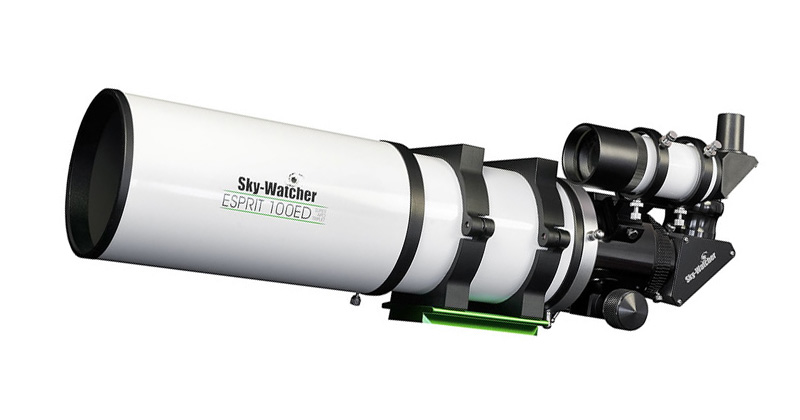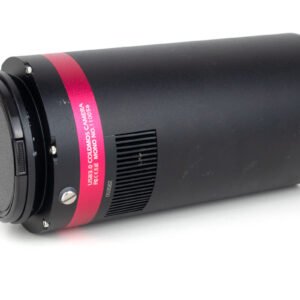The second way the Esprit fights chromatic aberration is by having three lenses at the front. Lens designers use glass with different refractive and dispersion indices, that is, lenses that bend the different colours of light in different amounts. By adding different lenses, they can have red, green and blue light all getting to focus at the same spot.
The effect of all this is to virtually eliminate chromatic aberration entirely. Your stars will be the correct colour, and (as long as you’re careful) nicely in focus.
As an aside, the final problem that refractors have is field curvature, where the focal plane isn’t flat, meaning it doesn’t focus nicely on a camera sensor. Worry not, the Esprit comes with a field flattener in the case. Separately, you can also get a reducer/flattener if you want a faster scope and a wider field.
Sidereal Trading has been selling small and medium triplets for some time, the William Optics Gran Turismo and the saxon FCD-100 range. The Sky-Watcher Esprit builds out the larger end of the spectrum, being 80mm, 100mm, 120mm and the huge 150mm apertures.
So if you’re interested in talking about the Esprit, or how it will work with your gear, give us a call. We’ll match (reasonable) prices with Australian dealers, of course, and can provide expert after-sales support better than anywhere in Australia.




